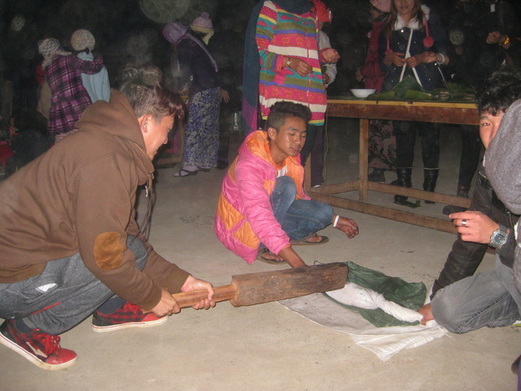
So I moved back into my old room at St Mathews Orphange Center and started doing trainings.
New Years was spent with the kids who delighted in the Kachin tradition of pounding sticky rice to within an inch of it's life, and then eating copious quatities of the resulting flattened glutinous stuff.
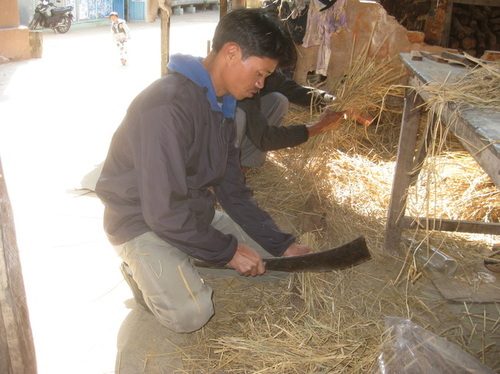
In the next picture we see the mud and straw stove performing well - the downfeed working just as intended.
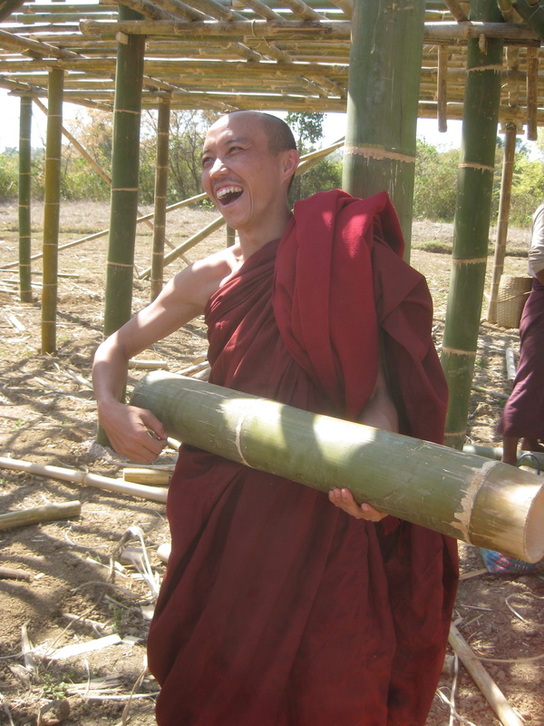 In America, we play "Air Guitar", but at Naung Taung, U Pin Ya plays "Bamboo Guitar"!
In America, we play "Air Guitar", but at Naung Taung, U Pin Ya plays "Bamboo Guitar"! In February I got an invitation via my good friend Jim, to visit Naung Taung monastery near Taunggyi. Jim had been training teachers there and told me that there was great interest in Renewable Energy and that the existing stoves were crude smokey affairs that should be improved. I made a preliminary visit and was very impressed by the Abbot and his commitment to progressive ideas and his dedication to improving the lives of his flock. He is ably assited by an irrepressible young monk called U Pin Ya.
Curiously, the young monks are actually a joyous and mischievious bunch, always ready to drop back into childish games at the least excuse. I wonder if they will turn into the wizen old fossils that one sees enshrined in faded photos upon the monastery walls?
One incident with the novice monks did get my ire however: they got into my suitcase one night to play with the tools and they set the combination lock so we couldn't open the case the next day. Unfazed, the bold U Pin Ya hunched over the case, listening to the the numbers tumble, like he was a Monte Carlo safecracker! Unfortunately, the whole lock was made of plastic and no clicks were heard. Later, another participant flattened a nail in imitation of a key and opened the case no problem!
Through a mutual acquaintance at SMOC, I was invited to visit Pastor Joel at Emmanuel Children's Home in Kalaymyo, which is in NW Myanmar, near the border with India. This is a remote area that is somewhat neglected by the central government, a fact that was made clear by the ubiquity of solar panels on many houses - the local power supply is completely unreliable. Joel has taken in a dozen orphans and abandoned children from the border area and he says there are many more, if he only had the funds to look after them. Until we arrived, (Hamish Lee, our New Zealand volunteer and myself), the children's home had only received electricity two hours per night from a local entrepreneur with a generator. This was expensive, as they had to pay a monthly fee per light bulb. Hamish, a recently graduated Mechanical Engineer, proved to be a great help, being open to everyone and a quick learner. Click here to check out his account of the experience.
On the way back from Kalay we visied a meditation center near Kanphyu village, which is about 40kms north of Mandalay, right on the banks of the Ayerwaddy River. A friend had contacted me about designing a PV system to replace the creaky old generator and I was delighted to oblige. Hamish and I stayed there a couple of days, measuring distances and counting lights and outlets. As it turned out, the monastery later decided to replace the diesel generator with a rice husk burning type of generator. I'll be very interested to see that in operation.
On the return journey, we took passage on a cargo boat going down the Ayerwaddy to Mandalay. At first it seemed that the boat would make it to Mandalay in less than the predicted 4 hours. But, since it took 2 hours just to leave the original location, and another hour to stop at inumerable little jetties to pick up more cargo, it was seven hours later that we waddled into Mandalay! But it was a memorable journey with very friendly and generous fellow passengers.
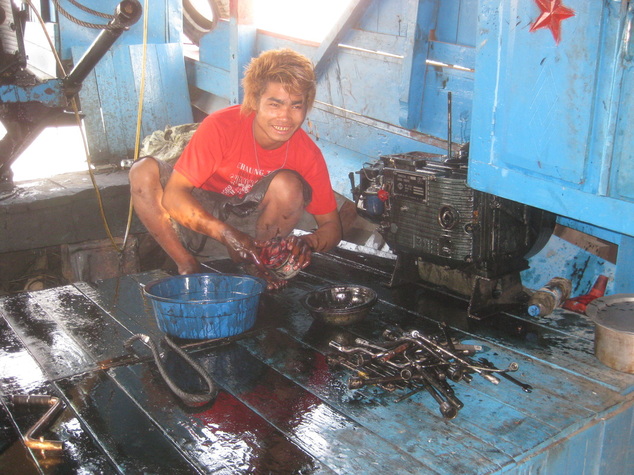
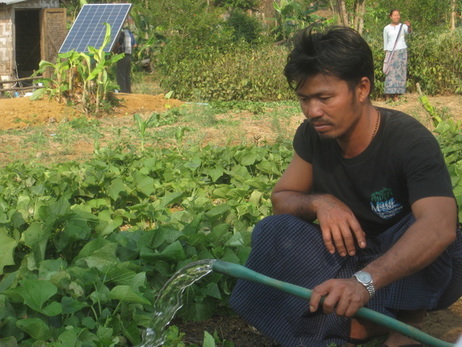
Another side project was the installation of a solar powered irrigation pump on Seya Peter's organic demonstration farm.
I bought a 12V DC pump locally and found that it worked well direct from the solar panel, but it tended to overheat. Lacking a sophisticated controller, the answer was to put a battery and charge controller into the system. This smoothed out the power supply and the pump ran cooler. Although it drove the cost up by another $175, it was worth it, as I am searching for water pumping solutions using locally sourced equipment.
The 300W panel is mounted on a manual tracker, which allows the user to follow the sun throughout the day, considerably increasing output.
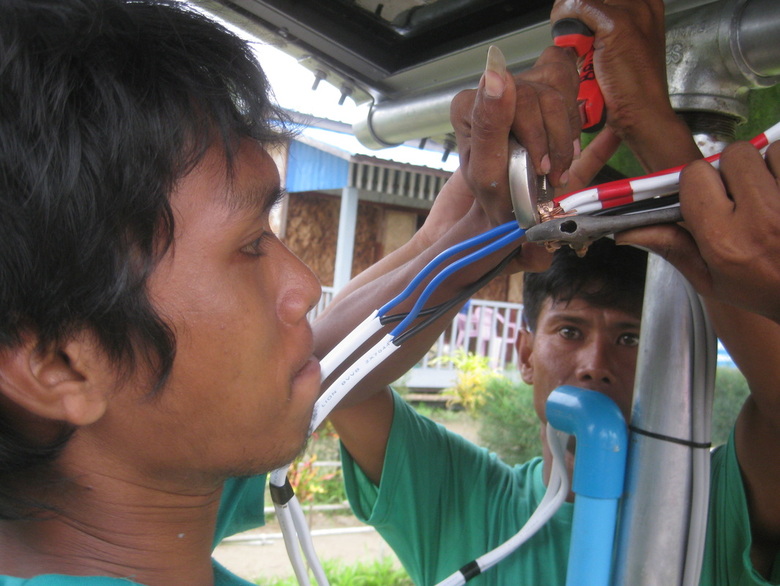 MSN employees tighten up a wire connector on the solar system.
MSN employees tighten up a wire connector on the solar system.
Through Roger, my translator in Lashio last year, I was introduced to the good folks at the Mangrove Services Network, which works mainly around Bogalay and up into Rahkine State. The vast mangrove forests of the Ayerwaddy Delta have been cleared to make way for shrimp farms and to be converted into charcoal and it is MSN's mission to reverse that destruction. Their main thrust is to experiment with the many varieties of mangrove trees to find the most suitable ones for replanting and to demonstrate technologies and enterprises that locals could use as alternatives to cutting the mangroves.
One of MSN's more ambitious projects is a training center on an island in the middle of the Bogalay River. This "island", is actually 30 acres of mangrove trees with one one acre of high solid ground above the water line. They backfilled this high patch with sand and dirt and now with tree planted, it is becoming very stable and useable. They have a training center where classes are given in such subjects as tree planting, stove building and alternative income enterprises. Prior to our arrival, they used a diesel generator for electrical power, which was quite expensive as fuel had to be brought down river at a high cost. Also, they had to run the 10,000W generator even when the load was only half a dozen 60W bulbs! So, everyone was delighted when I offered to install a PV system that would cover all of their electrical needs, except when large scale trainings were being conducted.
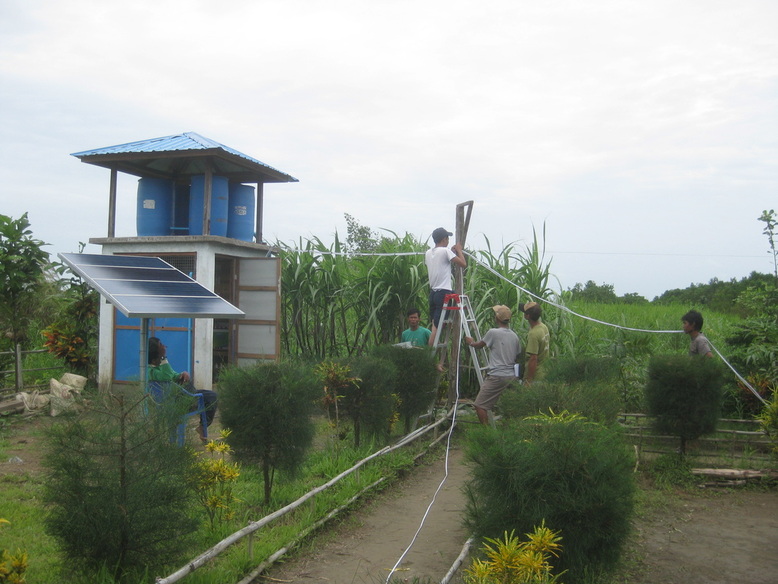 With the solar panels, on a manual tracker to the left, MSN employees are stringing up new cables all over the training center property.
With the solar panels, on a manual tracker to the left, MSN employees are stringing up new cables all over the training center property.
Kan Daw Village
After leaving MSN and the Bogalay region, Mike and Lisa and I traveled to Kan Daw, a Pwo Karen village, which is near Pathein, in the western part of Burma. This visit was arranged by my good friend and collaborator, Kehzer, who works for Alin Ain and specializes in setting up lending groups, as a tool in building community. I have worked with Kehzer and his groups in the Delta, several times before, but this visit stands out for the unparalelled warmth and generosity of the villagers in Kan Daw. A relatively prosperous rice-growing village, Kan Daw started a savings group 2 years ago and now it has over 100 members and is a key institution in stabilizing the community as it faces the challenges of the impacts of globalization, climate change and the encroaching modern world. I gave a two-day PV course, which Mike and Lisa helped with, and I demonstrated some of the new individual solar kits that I had recently sourced in Yangon. Previously, we had used a system that required the batteries to be brought to a central location for solar charging, but based on requests for individual home systems, I brought 10 units for distribution to savings group members. Like before, recipients pay back the cost of the system to the savings group and that money is used to buy more systems. Solar Roots provides the seed money for the first set and it's self-sustaining after that. I was particularly pleased to find a Myanmar solar company, (Asia Solar), in Yangon that assembles the kits in-county. Kehzer told me recently that, even before the first kits have been paid for, the community has decided to buy another 10 units - so pleased are they with the new solar lights and phone charger.
After the stove training at Naung Taung, I determined to upgrade the materials of the combustion chamber for increased longevity, so Hamish and I built an institutional-sized stove with an 8"X8" stainless steel combustion chamber. Later, this stove was installed in the SMOC kitchen and is undergoing testing as I write. Stainless steel may not be the final answer, due to it's relatively high cost and specialized tools needed to work it, but it's one more step in getting closer to the design that will really reduce smoke, reduce wood consumption and be affordable for locals to build.
Another material that I am experimenting with is made from a mixture of cement and rice husk ash in equal proportions. I learned about this mixture from the work of Alex Belonio in the Phillipines, though I have adapted the molding shapes. For some time, I have had difficulty producing clay bricks that were sufficiently hard to withstand the rigors of daily use in a stove and I'm hoping that this new mixture will be able to take the heat. Normally, cement is not considered a good material for stoves, but Mr Belonio assures us that by adding the rice husk ash, the cement can be made into a refractory (heat resistant), material. I used the same molds for the 5-brick stove mentioned at the beginning of this blog and plan to make up a few samples with thinner walls and get them out for field testing in January.
One exciting contact I made this year was with a group of potters who make large flower pots for export and who have great expertise in the area of clay and kilns. In their factories located in the Dry Zone, (near Shwebo), they are having difficulty with the cost and availability of wood to fire their pots. We have arranged to co-operate on our respective areas of knowledge next year - they will help me learn about clay and firing and I will help them find more efficient ways to fire their kilns, hopefully using rice husk as a fuel. It's going to be an exciting year next year and I hope you will follow our progress and support our projects.

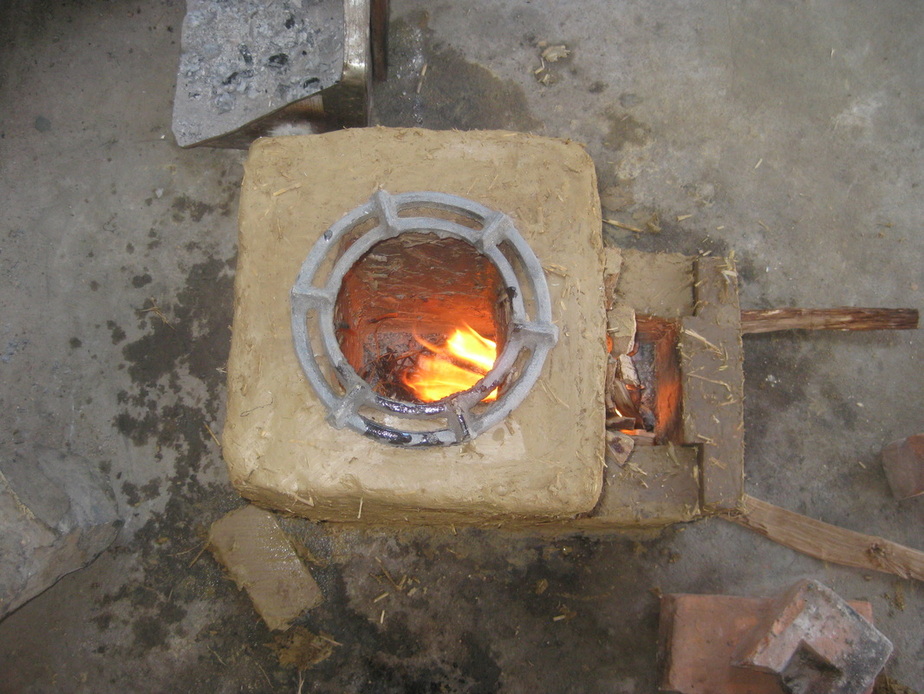
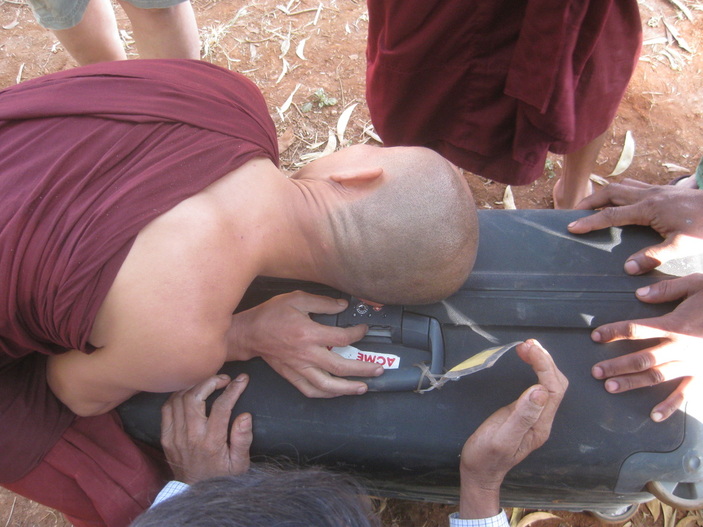
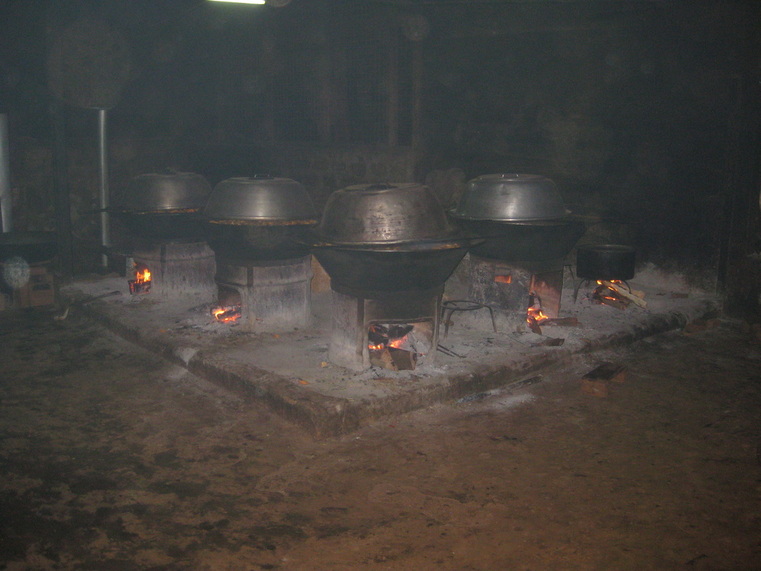
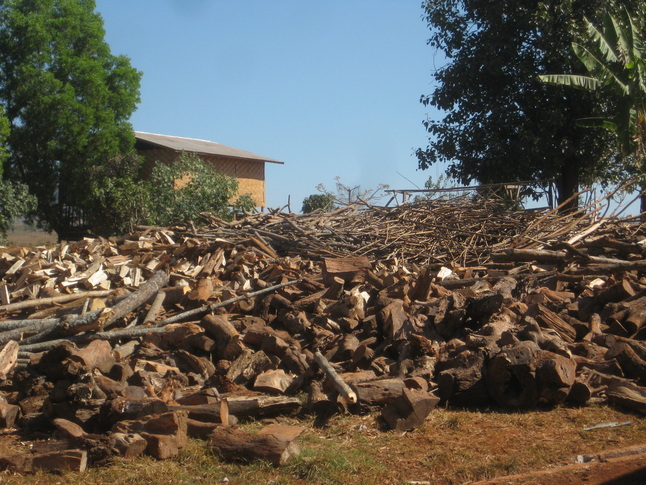
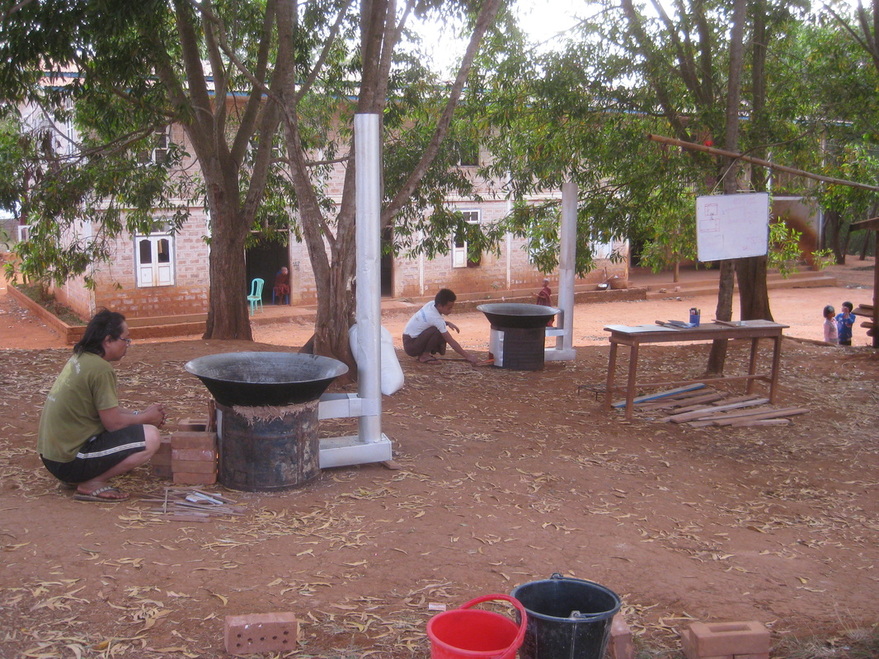
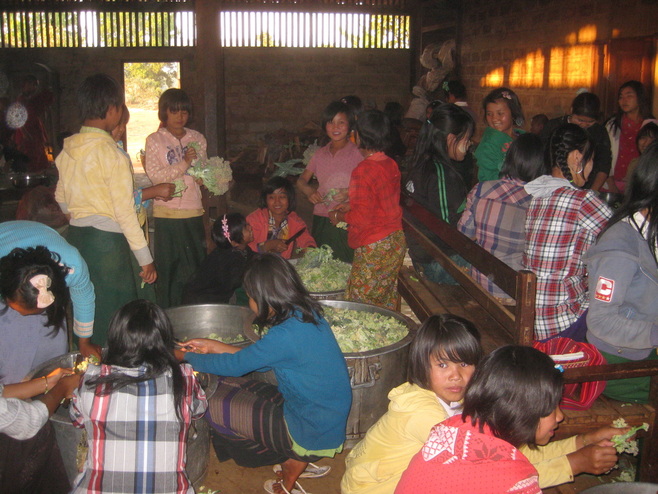
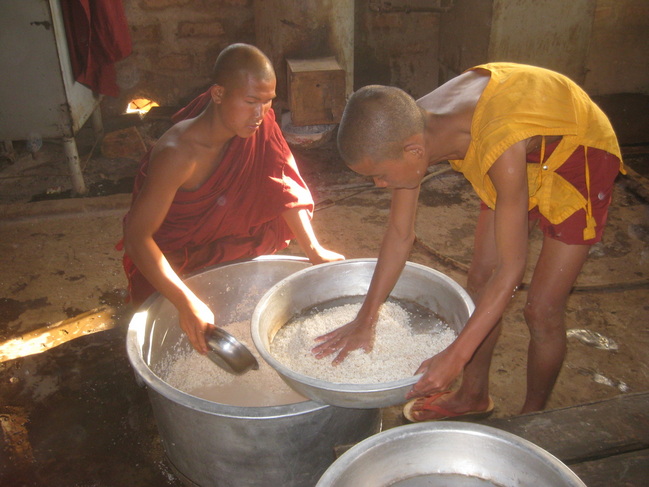
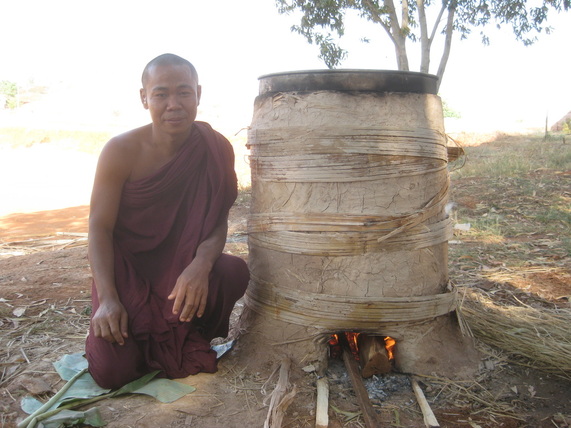
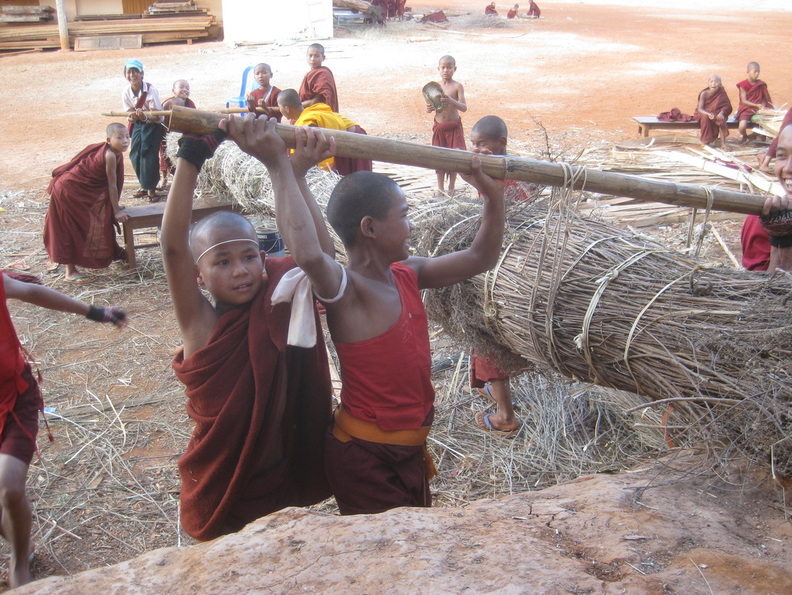
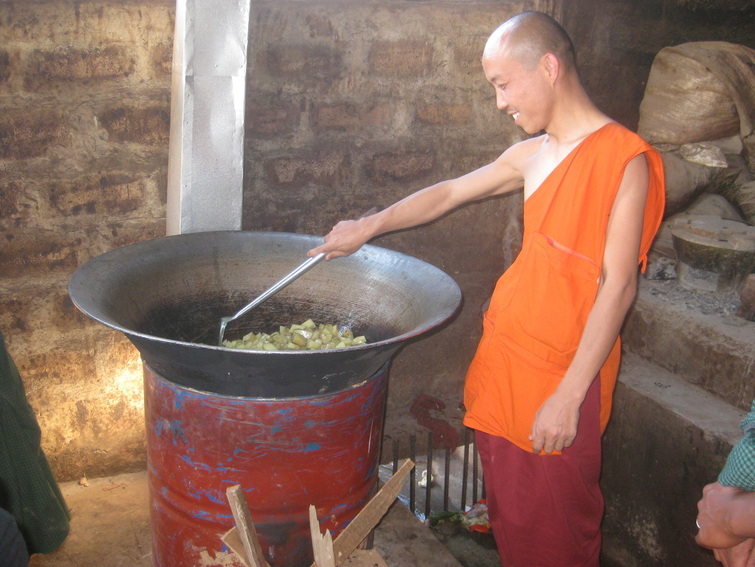
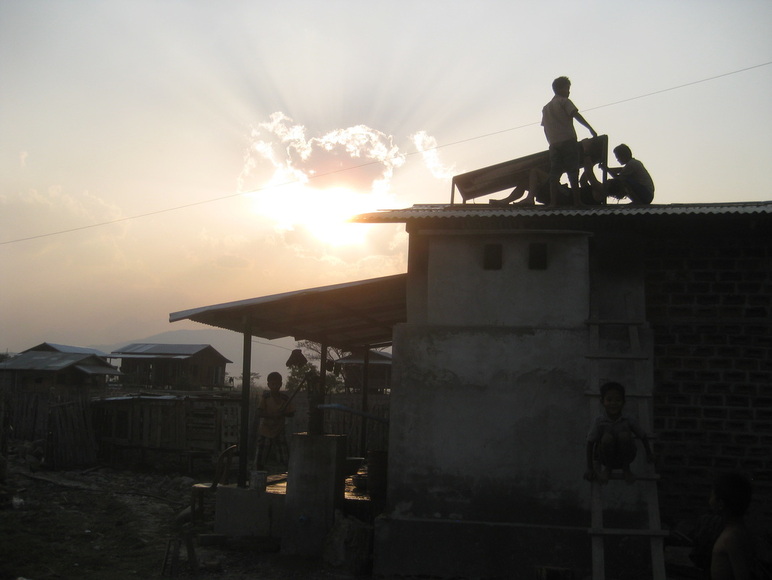
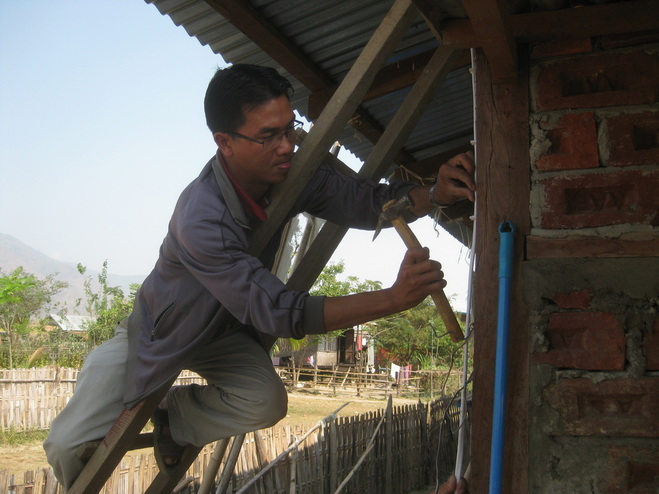
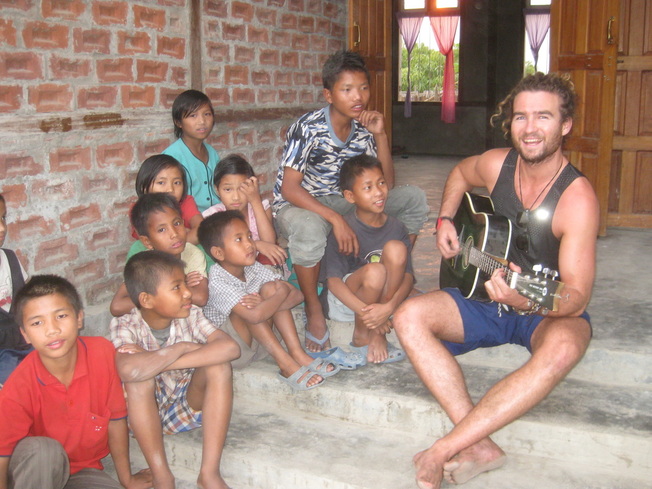
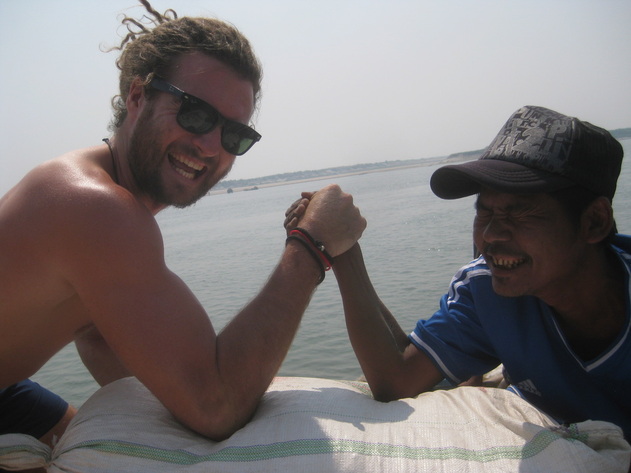
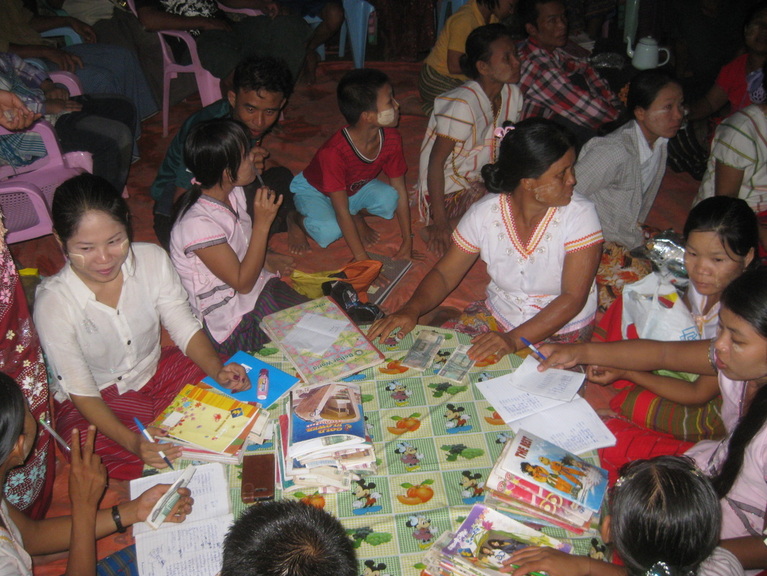
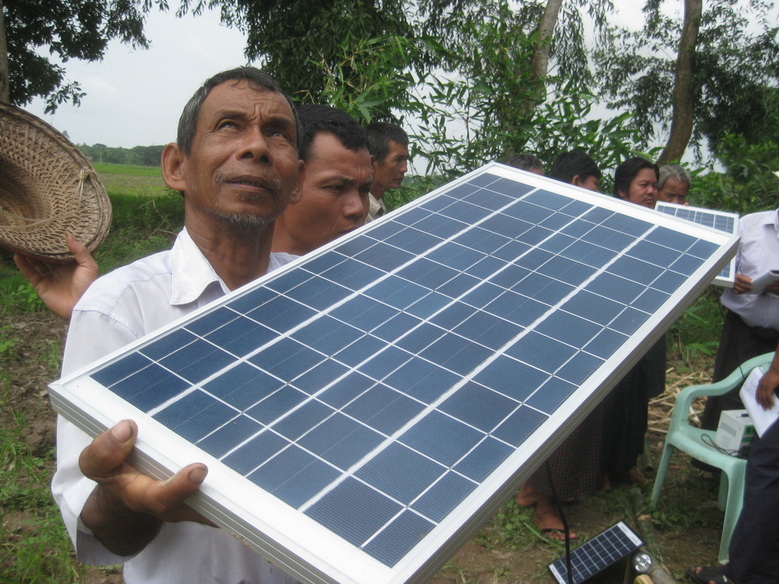
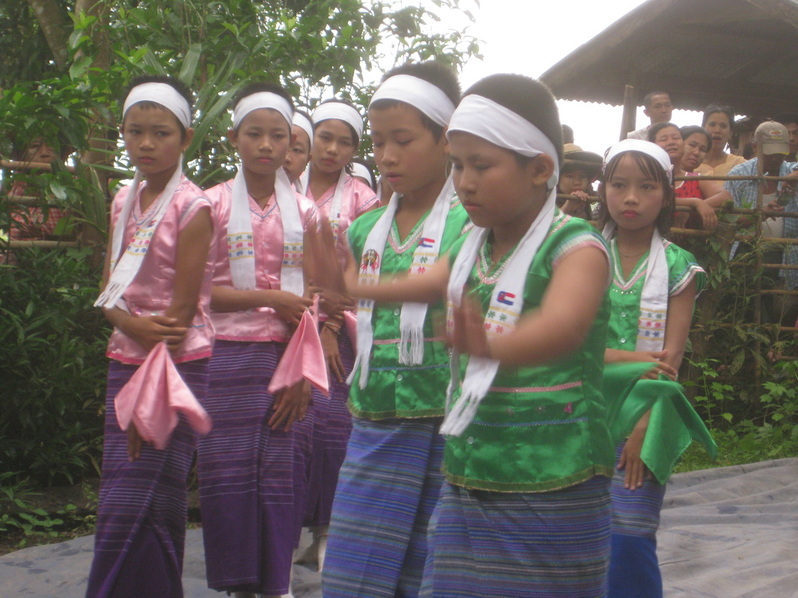

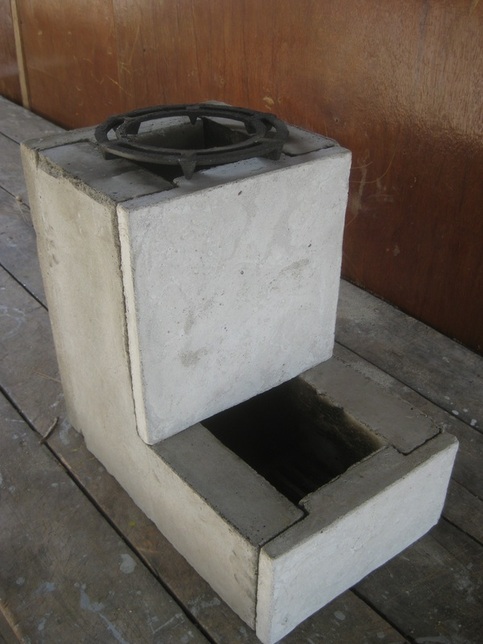
 RSS Feed
RSS Feed